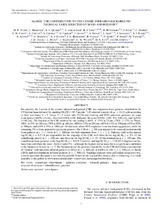| dc.contributor.author | Viero, M. P. | |
| dc.contributor.author | Monclesi, L. | |
| dc.contributor.author | Quadri, L.F. | |
| dc.contributor.author | Arumugam, V. | |
| dc.contributor.author | Assef, R.J. | |
| dc.contributor.author | Bethermin, M. | |
| dc.contributor.author | Bock, J. | |
| dc.contributor.author | Bridge, C. | |
| dc.contributor.author | Casey, C.M. | |
| dc.contributor.author | Conley, A. | |
| dc.contributor.author | Cooray, Asantha | |
| dc.contributor.author | Farrah, D. | |
| dc.contributor.author | Glenn, J. | |
| dc.contributor.author | Heinis, S. | |
| dc.contributor.author | Ibar, Edo | |
| dc.contributor.author | Ikarashi, S. | |
| dc.contributor.author | Ivison, R.J. | |
| dc.contributor.author | Kohno, K. | |
| dc.contributor.author | Marsden, G. | |
| dc.contributor.author | Oliver, S.J. | |
| dc.contributor.author | Roseboom, I.G. | |
| dc.contributor.author | Schulz, B. | |
| dc.contributor.author | Scott, Douglas | |
| dc.contributor.author | Serra, P. | |
| dc.contributor.author | Vaccari, M. | |
| dc.contributor.author | Vieira, J.D. | |
| dc.contributor.author | Wang, L. | |
| dc.contributor.author | Wardlow, Julie L. | |
| dc.contributor.author | Wilson, G.W. | |
| dc.contributor.author | Yun, M.S. | |
| dc.contributor.author | Zemcov, M. | |
| dc.date.accessioned | 2016-01-08T10:05:59Z | |
| dc.date.available | 2016-01-08T10:05:59Z | |
| dc.date.issued | 2013 | |
| dc.identifier.citation | Viero, M.P., et al. (2013). HerMES: The contribution to the cosmic infrared background from galaxies selected by mass and redshift. The Astrophysical Journal, 779(32): 1-23 | en_US |
| dc.identifier.issn | 0004-637x | |
| dc.identifier.uri | http://hdl.handle.net/10566/2051 | |
| dc.description.abstract | The cosmic infrared background (CIB), discovered in Far
Infrared Absolute Spectrophotometer (FIRAS) data from the
Cosmic Background Explorer (COBE; Puget et al. 1996;
Fixsen et al. 1998), originates from thermal re-radiation of
imagine cutting out hundreds of thumbnails from a map centered
on the positions where galaxies are known to be, and averaging
those thumbnails together until an image of the average galaxy
emerges from the noise. These positional priors can come
in many forms, e.g., they could be catalogs of UV, optical,
IR, or radio sources. Note that the output is the average of
that population in the stacked maps, i.e., there will likely be
sources whose actual fluxes are higher or lower. Thus, the more
homogeneous the sources comprising the input list, the more
meaningful the stacked flux will be. | en_US |
| dc.language.iso | en | en_US |
| dc.publisher | American Astronomical Society | en_US |
| dc.rights | AAS grants back to authors the non-exclusive right of republication, subject only to giving appropriate credit to the journal in which the article was published. This non-exclusive right of republication gives authors the right to approve or deny reproduction of all or part of the article and to post the final published version online. | |
| dc.source.uri | http://dx.doi.org/10.1088/0004-637X/779/1/32 | |
| dc.subject | Cosmology | en_US |
| dc.subject | Observations – galaxies | en_US |
| dc.subject | Infrared | en_US |
| dc.subject | Galaxies – large-scale structure of universe | en_US |
| dc.subject | Astrophysics | en_US |
| dc.subject | Cosmic infrared background (CIB) | en_US |
| dc.subject | Far Infrared Absolute Spectrophotometer (FIRAS) | en_US |
| dc.subject | Stacking | en_US |
| dc.title | HerMES: The contribution to the cosmic infrared background from galaxies selected by mass and redshift | en_US |
| dc.type | Article | en_US |
| dc.privacy.showsubmitter | false | |
| dc.status.ispeerreviewed | true | |
| dc.description.accreditation | Web of Science | en_US |

